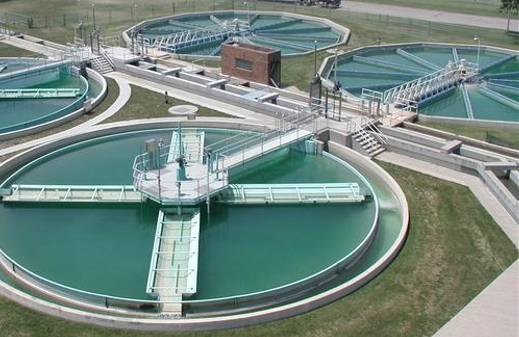Wastewater is generated from production processes at pharmaceutical sites. It is vital that the basins of the wastewater treatment plants (WWTP) get covered and are not open to the atmosphere, and that the vents generated are treated safely with environmental technology for emissions abatement.
Wastewater emissions challenges
Wastewater treatment basins represent a major challenge at an environmental level, since they emit Volatile Organic Compounds (VOC) emissions and generate odours due to the degradation of organic matter, which affect both people working at the plant, as well as the communities around and the environment.
Whenever wastewater basins are open to the atmosphere, odorous emissions of these VOC compounds occur. Aeration of biological wastewater treatment basins, stirring operations, open buffer tanks, settling tanks, flocculation equipment, API separators and wastewater stripping facilities are activities that need special attention. In all of these cases, the emission of pollutants may be shifted from the water basin to the atmosphere. And in order to treat that, a waste gas treatment system becomes vital.
Pharmaceutical production plants need to treat the wastewater they generate from their production daily activities.
Contaminated wastewater at pharma production sites
Basins for wastewater treatment are the origin of greenhouse gas polluting emissions, such as benzene, toluene, aliphatic compounds, methane (CH4) and other organic volatile substances which hugely rise ozone depletion in comparison to carbon dioxide (CO2). Apart from those, inorganic volatile compounds are also present in wastewater.
Wastewater emissions generated from pharma treatment basins must be eliminated with specific technology whose objective is to transform the gaseous polluting compounds into H2O and acceptable quantities of CO2, leading to a huge reduction on the environment impact even in the surrounding population.
Technology solution to eliminate wastewater emissions at pharma plants
The most effective and proven technology to eliminate emissions generated at pharmaceutical production sites’ wastewater treatment plants is Regenerative Thermal Oxidizers (RTO). RTO is a piece of equipment designed to eliminate Volatile Organic Compounds (VOCs). Essentially, it is formed of three towers with ceramic beds, where energy is recovered, and a combustion chamber in which the temperature is kept constant in order to enable oxidation. The organic compounds it eliminates consist primarily of carbon and hydrogen: consequently, when they react with oxygen they form carbon dioxide and water. The combustion chamber incorporates a burner that normally uses natural gas to raise the temperature inside the chamber, although other fuels (fuel oil, diesel oil, etc.) or even electricity can also be used.
How Tecam can help you
Tecam provides environmental technology for the pharma sector. We provide solutions for the treatment of emissions from API and synthesis production and from wastewater treatment basins at pharma production sites.
We can eliminate emissions from all chemical processes, from raw materials and the production of active pharmaceutical ingredients to the final formulations of the finished product, as well as vents and emissions generated at wastewater treatment plants (WWTP) at pharmaceutical production sites.
To help you with your emissions from wastewater treatment plants at your pharmaceutical production site, please contact us today – we’ll be happy to help you.

